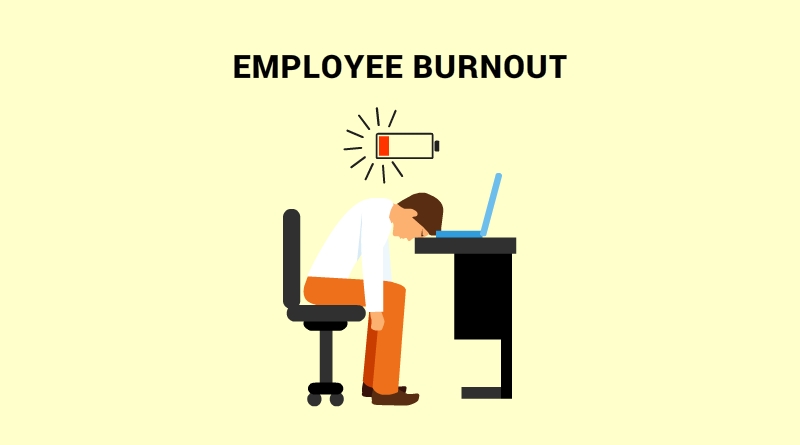Emotional and mental exhaustion, reduced productivity, disengagement… Noticed these signs in your team members? Many of us have at some point gone through this – when you don’t recognize your normal, productive self. What can managers can do to avoid workplace burnout in employees? How to act if you notice the symptoms in yourself? Let’s sort it out.
No, you have not just suddenly became a procrastinator
Employee burnout is becoming an issue for companies all over the world. The World Health Organization has officially recognized it as an occupational phenomenon. But what exactly a job burnout implies? According to WHO, burnout is characterized by “feelings of energy depletion or exhaustion; increased mental distance from one’s job, or feelings of negativism or cynicism related to one’s job; and reduced professional efficacy.”
The problem here is that the issue of burnout is largely stigmatized in many cultures. In such a condition, you are really close to getting fired, disciplined, or put on a performance improvement plan, as burnout is inevitably related to reduced productivity, which is associated with procrastination and absenteeism. It’s not a rare situation when after having shared your feelings with someone you get in response something like “Pull yourself together! You have just gotten a little lazy.”
So, the first thing here is to admit that burnout is a mental health issue. The issue that should be noticed and properly treated.
The second thing is that job burnout is just normal. It can strike you, your peers, managers, CEO and everyone else. No one is safe from this danger.
The third moment: it has nothing to do with laziness and procrastination. Burnout always has its reasons and you always can deal with them. If you personally face burnout, the last thing to do is to blame yourself for being lazy and unproductive.
Yes, this is a common issue
Look at the following figures just to make sure:
- In the US, 67% of full-time employees reported feelings of burnout with varying frequency (Gallup)
- In Germany, an estimated 2.7 million employees felt burned out a few years back because of stress at work (Gallup)
- Approximately a quarter of French workers are experiencing work-related “hyper stress.” (Gallup)
- Close to 60% of developers report they have suffered from burnout at some point in their career (Blind)
- Rigorous workplace cultures of the world biggest tech corporations cause huge levels of job burnout: in Oracle, over 63% of employees said they were currently going through this, for Amazon and Cisco the figure is close to 60%, for Microsoft and Apple – slightly higher 57% (Business Insider).
Roots of a problem
It’s quite difficult to compile an exhaustive list of burnout causes, but, in general, they can be divided into organizational and personal ones. As for the first group, the pillars are:
- Unfair treatment at work
- Unmanageable workload
- Lack of role clarity
- Lack of communication and support from a manager
- Unreasonable time pressure
- Harsh workplace culture, where you are measured only by the number and scale of your achievements
And what about personal causes?
- Unrealistic expectations about a profession or a company (often could be observed in young specialists)
- An inter-personal conflict between colleagues that often poisons the workplace atmosphere and affects productivity
- General depressive condition of an employee that is not linked to workplace issues
Anyway, the statistics show that the first group of reasons dominates, which means that burnout is mostly about the workplace, not people.
As the issue is becoming more grave and noticeable, the responsibility for managing is shifting away from an employee towards a company. It’s true, as businesses pay a huge price for the high burnout rate among employees: they have to deal with high turnout, reduced business performance, low morale and toxic relations within a team.
So, if you are a manager, take note: it’s now on you to build a burnout strategy.
Strategies to avoid workplace burnout in a team
- Be clear about roles and responsibilities. When an employee does not realize a direction he is moving on, it could be a strong discouraging factor. The most pleasant thing about the work is to achieve goals – small or big – but it’s quite challenging if you do not fully understand your role in the process. Be clear about responsibilities, spell them out, and show the value of every employee in achieving the company’s goals. You’ll see, it will raise the team spirit and excitement of each member.
- Meet with your team regularly. In other words, follow an open door policy. The main task of a manager here is to maintain a high level of trust within a team. The only way to achieve it is to talk to people, be honest and pay attention to their issues. Otherwise, when a person feels abandoned and lonely at a workplace, the odds you will see burnout symptoms in him are really high.
- Respect your team’s life outside work. Of course, you, as a manager, are responsible for achieving concrete business results. But not at the expense of employees’ personal lives. If you are not going in line with your plans, try to optimize processes instead of encroaching upon the team members’ off-work time.
- Advocate for resources. If your team is understaffed, ask for more hires. Yes, there will be additional costs for training and adaptation, but struggling on the verge of collapse with a totally exhausted team is not a sign of a comfortable and healthy atmosphere at the workplace. Be rational and properly allocate resources for every business task.
- Stop your employees from overworking. Keep an eye on the hours that your employees are working. If you sacrificing them to meet revenue goals and pushing people beyond their breaking point, there is bad news for you. Remember that your team is a driving force, and the company will progress if employee wellness is made a priority. So, the solution to avoid extensive burnout is simple: just stop overworking your team. They will definitely thank you for that and made their best to reach set goals:)
Let’s summarize
- Workplace burnout is a real mental health issue and must not be ignored in any case
- The majority of employees all over the world have once felt burnout symptoms
- Burnout is not procrastination or laziness – it often strikes well-engaged and talented employees
- There are both organizational and personal reasons for burnout, and the first ones are spread the most
- Businesses are also severely affected by the high burnout rate of their employees and should be motivated to resolve the issue
- To avert burnout cases within a team, a manager should be clear about the roles of each one in the work process, be open for conversations, do not overload employees and properly allocate resources to make the work comfortable and effective.



